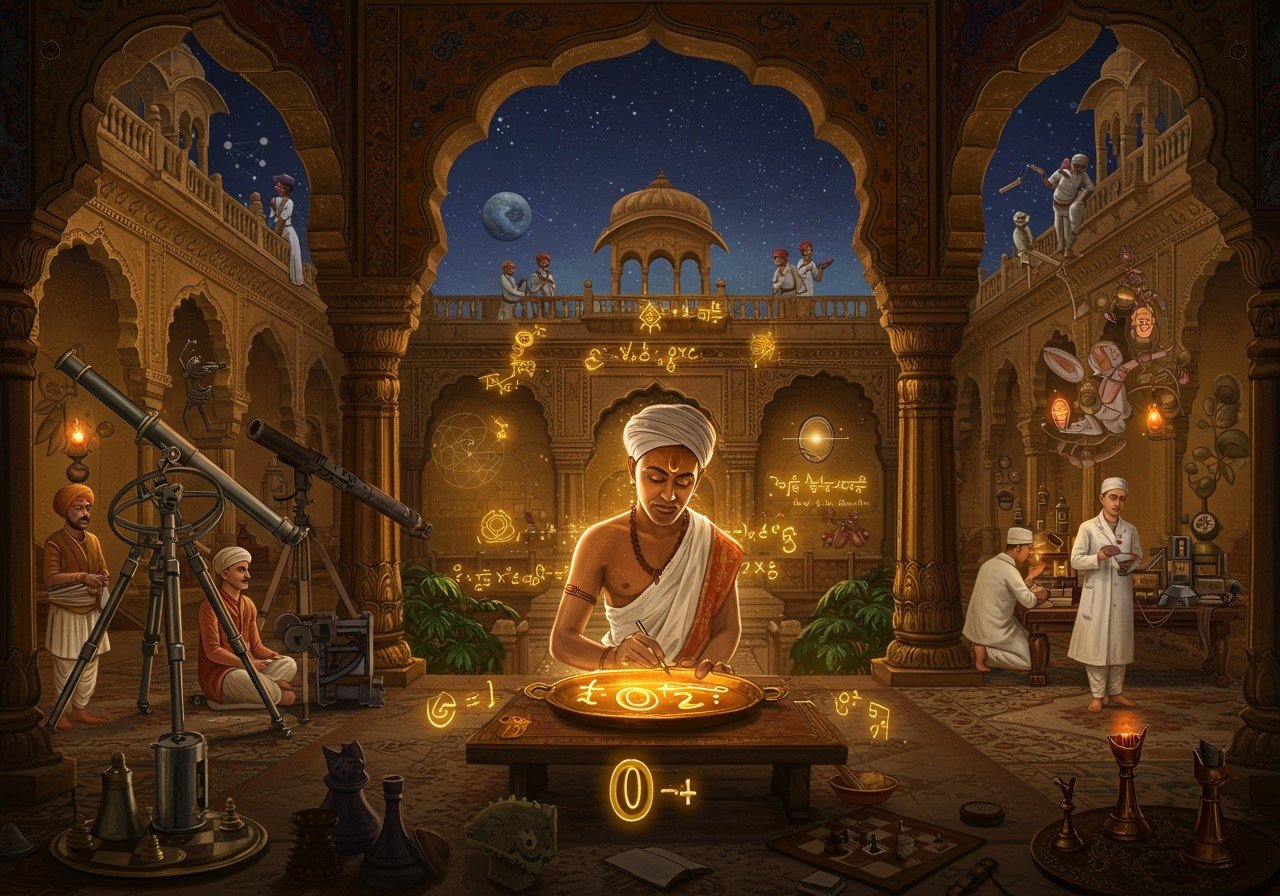
The Golden Age of India, spanning from the 4th to 6th centuries CE, primarily under the Gupta Empire, was a period of unprecedented intellectual and cultural flourishing. This era witnessed remarkable progress in various fields, including science, mathematics, astronomy, literature, art, technology, and engineering. This article delves into the significant achievements of this era, highlighting the contributions of ancient Indian scholars and innovators.
Mathematical Marvels of the Golden Age
The Golden Age of India significantly advanced mathematical thought. Aryabhata, a renowned mathematician and astronomer, introduced the concept of zero as a number and the place value system, revolutionizing arithmetic. Brahmagupta further expanded mathematical knowledge by developing rules for solving quadratic equations and working with negative numbers. Bhaskara I achieved remarkable accuracy in calculating the value of pi. The Sulbasutras, ancient Vedic texts, laid out geometric principles used in altar construction, influencing the development of modern geometry. This exchange of mathematical ideas even reached ancient Greece, further solidifying India’s contribution to global mathematical understanding.
Astronomical Advancements Reaching for the Stars
Astronomy also experienced significant progress during this period. Aryabhata’s influential work, Aryabhatiya, proposed the heliocentric model, suggesting that Earth rotates on its axis and revolves around the Sun. Varahamihira accurately predicted solar and lunar eclipses and authored Brihat Samhita, a comprehensive text covering astronomy and astrology. The development of timekeeping instruments like sundials (gnomon) and water clocks further enhanced astronomical observations. The Panchanga, a Hindu lunar-solar calendar, was refined during this time and continues to be used today.
Medical Innovations and the Wisdom of Ayurveda
The Golden Age saw remarkable advancements in medicine, particularly in the field of Ayurveda. Sushruta, revered as the ‘father of surgery,’ composed the Sushruta Samhita, a detailed treatise describing various surgical procedures, including cataract surgery, plastic surgery, and rhinoplasty. Charaka’s Charaka Samhita focused on internal medicine, diagnosis, and treatment, emphasizing the use of herbal remedies and medicinal plants. Public health practices during this era prioritized sanitation and hygiene, contributing to overall well-being.
Literary and Artistic Expressions: A Cultural Renaissance
This period was a golden age for literature and the arts. Kalidasa, a celebrated poet and playwright, created masterpieces like Shakuntala and Meghaduta. Other literary luminaries such as Bhasa and Bharavi enriched Sanskrit literature with their plays and epic poems. The Panchatantra, a collection of fables, achieved global recognition through translations into numerous languages, influencing storytelling traditions worldwide. Art and architecture flourished, resulting in the creation of magnificent temples, stupas, and sculptures that showcased refined aesthetic sensibilities.
Technological and Engineering Ingenuity
The Golden Age of India showcased remarkable technological and engineering progress. Sophisticated irrigation systems, including stepwells and reservoirs, significantly improved agricultural productivity. These stepwells were not merely functional but also architectural marvels, demonstrating India’s advanced engineering and artistic skills. The Iron Pillar of Delhi stands as a testament to the advanced metallurgy of the time. Its rust-resistant properties, even after centuries of exposure to the elements, highlight the exceptional skill of ancient Indian metalworkers. Textile production thrived, with the creation of fine cotton and silk fabrics highly sought after in international trade. These textiles were renowned for their quality and intricate craftsmanship. Civil engineering reached new heights with the construction of well-planned cities featuring advanced drainage systems and public infrastructure, designed for the comfort and efficiency of their inhabitants. Jute cultivation also emerged during this period, showcasing early agricultural advancements.
Poojn.in: Connecting You to India’s Golden Age Heritage
Poojn.in, India’s largest cultural goods and services store, offers a wide selection of products that connect you with the rich heritage of this era. Explore our collection of:
- Bel Malas: Traditionally used for prayer and meditation, these malas represent a tangible connection to ancient spiritual practices.
- Tulsi Malas: Revered for their sacred properties, Tulsi malas are an essential part of many Hindu rituals and ceremonies.
- Shiva Lingams: Representing Lord Shiva, these lingams serve as a focal point for worship and spiritual reflection.
- Brass Diyas: Used in traditional aarti ceremonies, these diyas symbolize light and knowledge, core values of the Golden Age.
- Asans (Meditation Seats): Enhance your meditation practice with traditional asans, promoting comfort and focus during spiritual reflection.
Poojn.in provides a convenient way to incorporate elements of India’s rich cultural heritage into your modern life. Visit us today to explore our extensive collection.
Conclusion
India’s Golden Age was an era of extraordinary intellectual and cultural achievements. The advancements in mathematics, astronomy, medicine, literature, art, technology, and engineering left an indelible mark on the world. The legacy of this era continues to inspire and influence us today, reminding us of the power of human ingenuity and creativity. Poojn.in helps you connect with this rich heritage by offering authentic products that reflect the traditions and values of this remarkable period.
FAQs on India’s Golden Age
What defined India’s Golden Age? The Golden Age of India was marked by significant advancements in various fields of knowledge, including mathematics, astronomy, medicine, literature, and the arts.
How did mathematics evolve during this period? Indian mathematicians made groundbreaking contributions, such as the concept of zero, the decimal system, and advancements in algebra and trigonometry.
What were the key astronomical discoveries? Astronomers like Aryabhata proposed the heliocentric model and made accurate predictions of eclipses, while instruments like sundials and water clocks were developed.
What medical advancements were made? Ayurveda flourished, with texts like Sushruta Samhita and Charaka Samhita detailing surgical procedures, herbal remedies, and holistic healing practices.
How did art and literature contribute to the Golden Age? Great poets like Kalidasa enriched Sanskrit literature, while magnificent temples, stupas, and sculptures showcased artistic achievements.


